Soulard Historic District
Introduction
Text-to-speech Audio
Located two miles south of downtown St. Louis, Soulard was founded in 1764 and is one of the oldest neighborhoods in St. Louis. Listed as both a city historic district and National Historic District, it includes the estate once owned by Antoine and Julia Soulard, who arrived from France by way of New Orleans in the late eighteenth century. Antoine Soulard was a surveyor who received a Spanish land grant just west of the Mississippi River as compensation for his surveying work. In 1779, Julia Soulard donated two blocks to establish an open-air market that has since remained in continuous existence as the Soulard Market. During the mid-1800s, Irish, German, and Eastern European also immigrants began settling in the area, many of whom left Europe to escape political turmoil. Upon arriving in St. Louis, they discovered that the extensive limestone caves and natural water supply were ideal for brewing and storing beer, leading to the establishment of breweries such as Anheuser-Busch, which borders Soulard to the south. As the population continued to grow throughout the nineteenth century, numerous brick row houses and 'flounder houses' were constructed, along with Victorian town-homes and a few mansions. A recent architectural survey concluded that St. Louis contains the greatest density of flounder houses (half-roofed structures) of any city in the U.S., and quite a few of these structures are in Soulard.The neighborhood is known for hosting an annual Mardi Gras festival, a Bastille Day celebration, a Pet Parade, and an 'Oktoberfest' each year.
Images
Historic Soulard
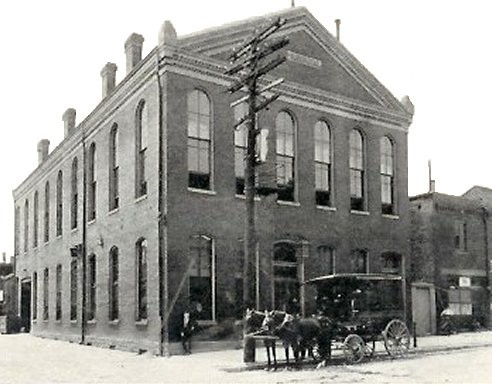
Soulard in the aftermath of the 1896 cyclone
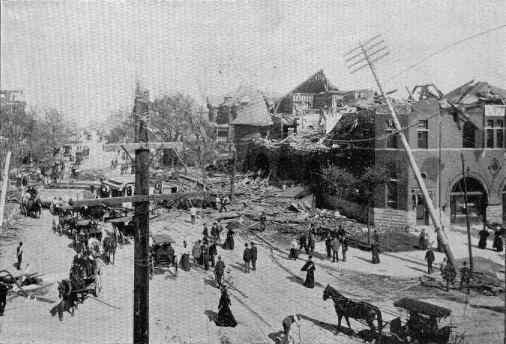
Soulard Market began as an open-air farmers market established by Julia Soulard in 1779. The first market building was constructed in 1843, but it was destroyed by a tornado in 1896 and it was not fully rebuilt until 1928-29.
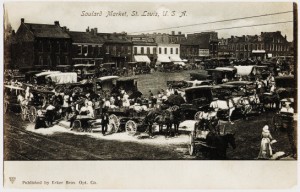
A Soulard street (1972)
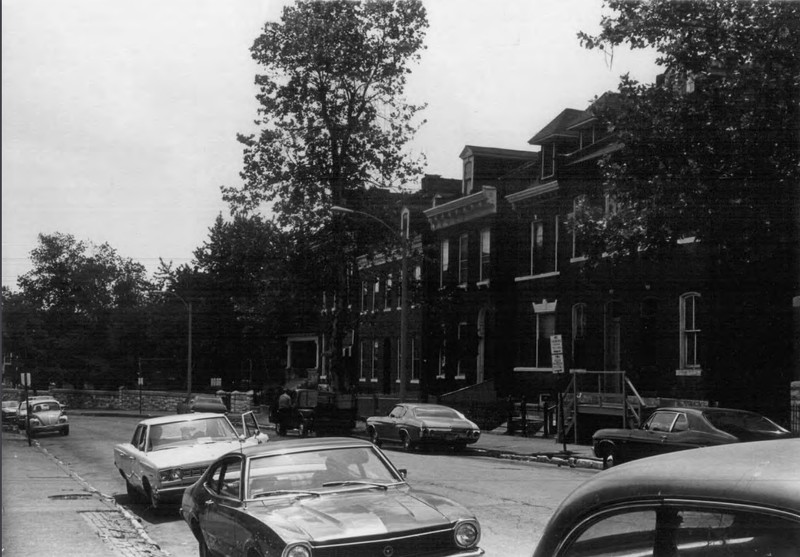
Brick double half-flounder house, Soulard (1972)

An early to mid-1800s brick family cottage that was later converted into a convenience store (1972)
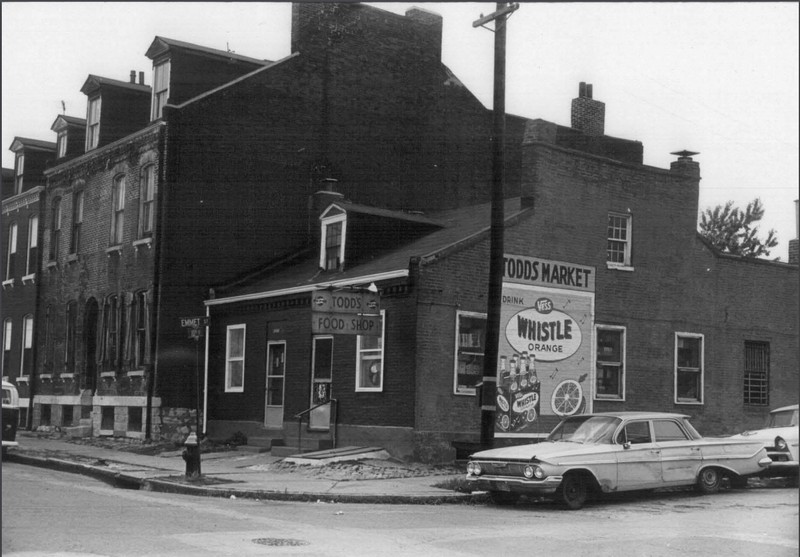
A corner tavern in Soulard with a residence above (1972)
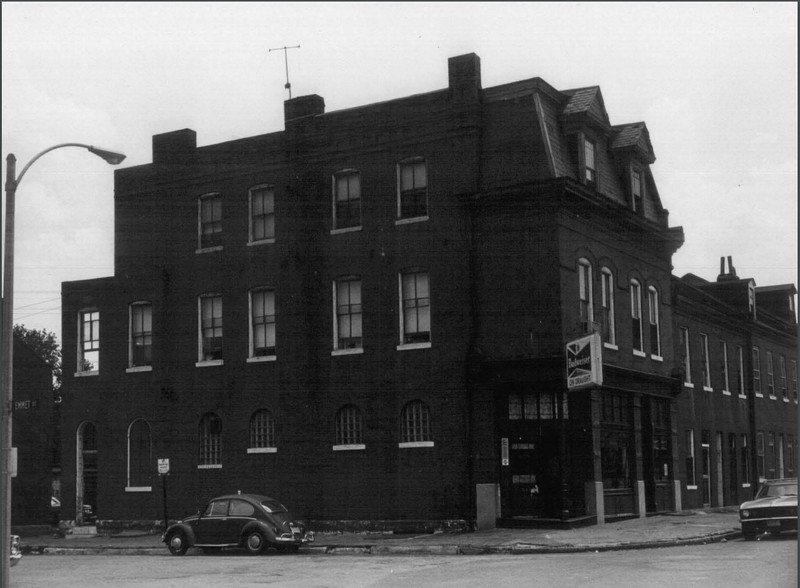
Soulard Market brick building constructed in 1928-29 at the site of the original open-air Soulard Market (shown here in 1972)
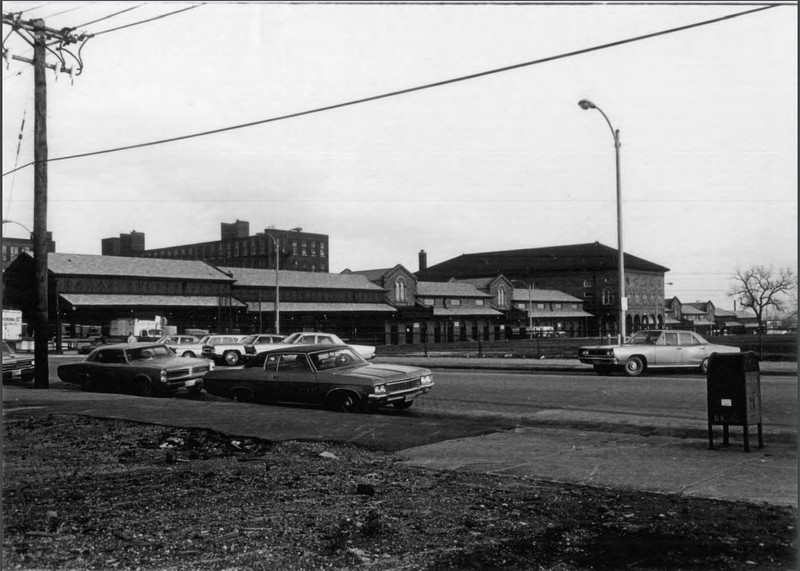
A two-story brick row duplex with alley-house at rear (1972)
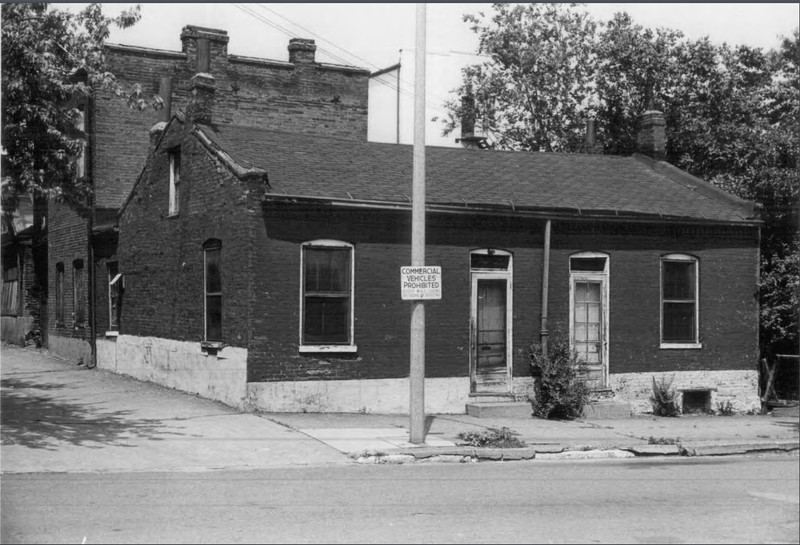
Aerial view of Saints Peter and Paul Church and School (1972)
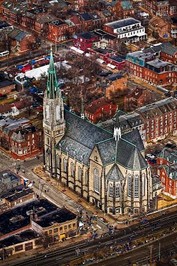
A Soulard street showing Saints Peter and Paul Church today
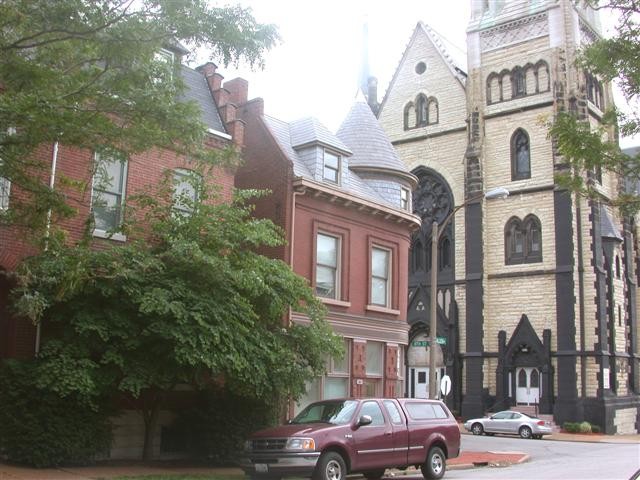
View of Soulard today with Saints Peter and Paul Church in the foreground
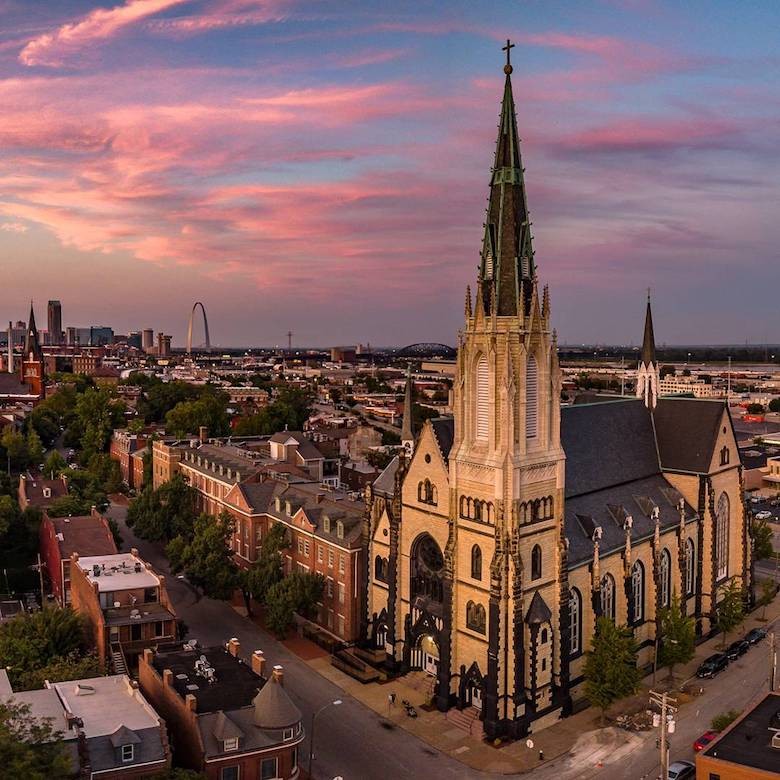
A half-roofed 'flounder house' located in Soulard, which contains nearly 300 of these structures, the highest density of flounder houses anywhere in the U.S.
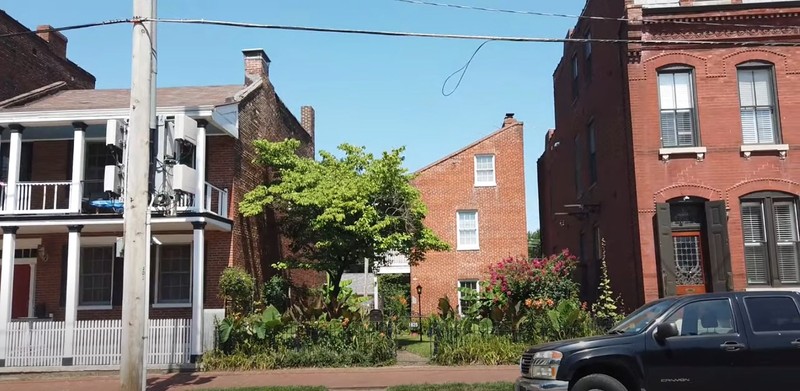
Former home of Dr. Franz Arz, an Austrian scientist, built in the Second Empire style.
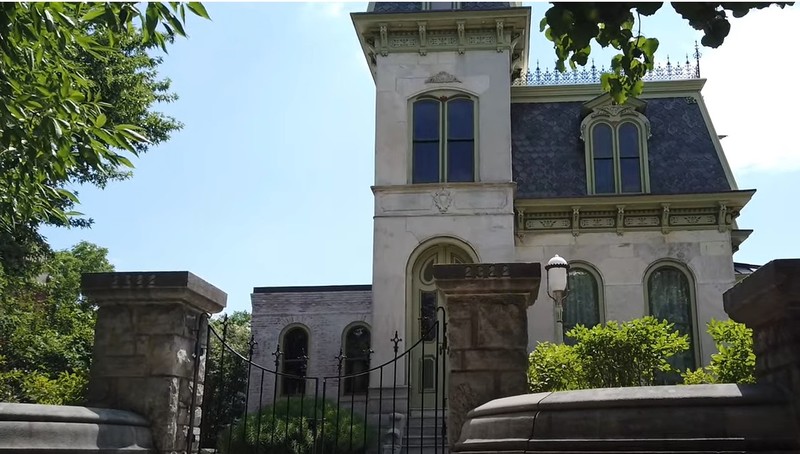
The 'Trappers Cottage' (built circa 1810) pre-dates the urban architecture in Soulard
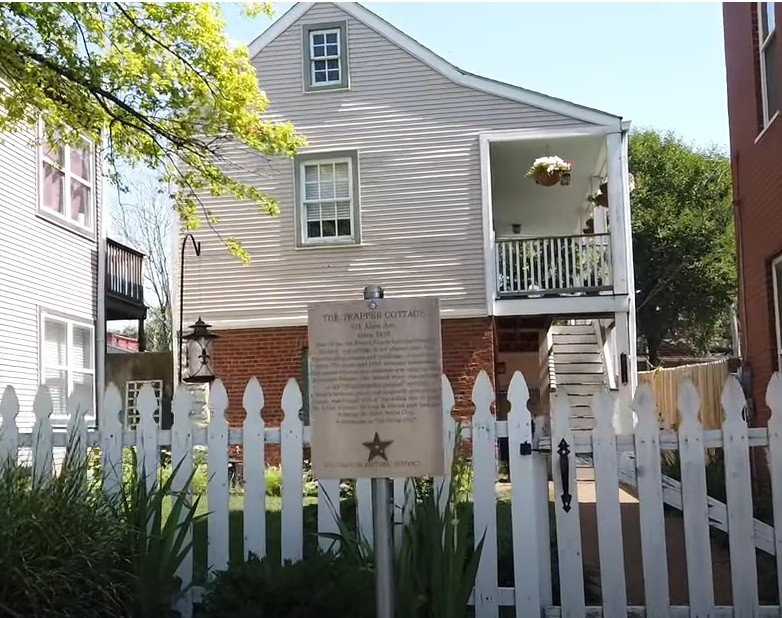
The Smile Soda Factory was destroyed by the 1896 tornado
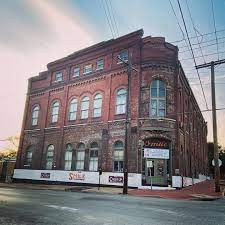
Saints Peter and Paul Church contains the tallest spire in Soulard
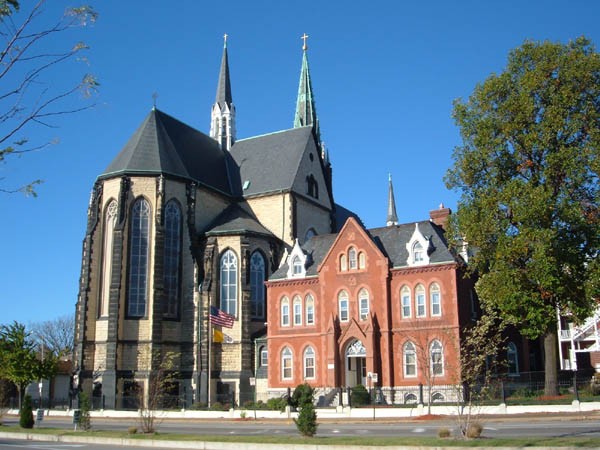
"Historic Soulard" historical marker, with the Soulard Market behind it. Soulard Market was founded by Julia Soulard in 1779. The first market building (1843) was destroyed by the 1896 tornado. The next Soulard Market building was constructed in 1928-29 in the Italian Renaissance Revival style. It remains standing today.
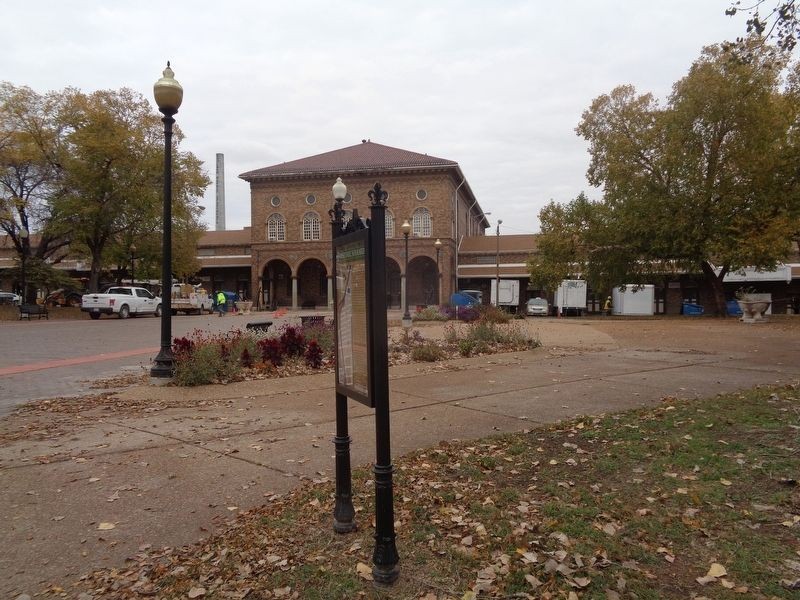
Historic Soulard historical marker, which can be found near the Soulard Market building.
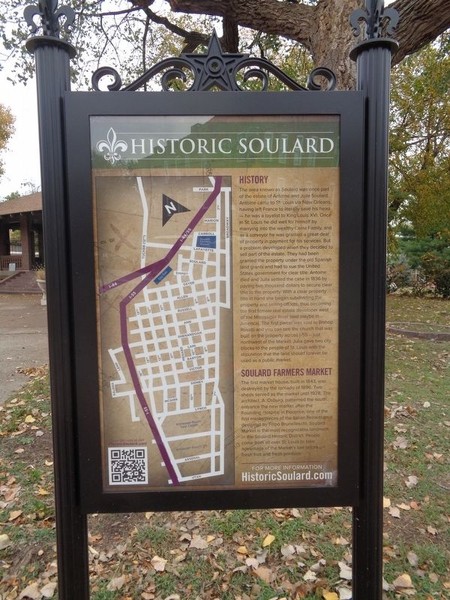
1833 Eighth Street, Soulard. This private home was previously the St. Elizabeth Settlement House, which helped German immigrants find housing and work upon arriving in St. Louis.
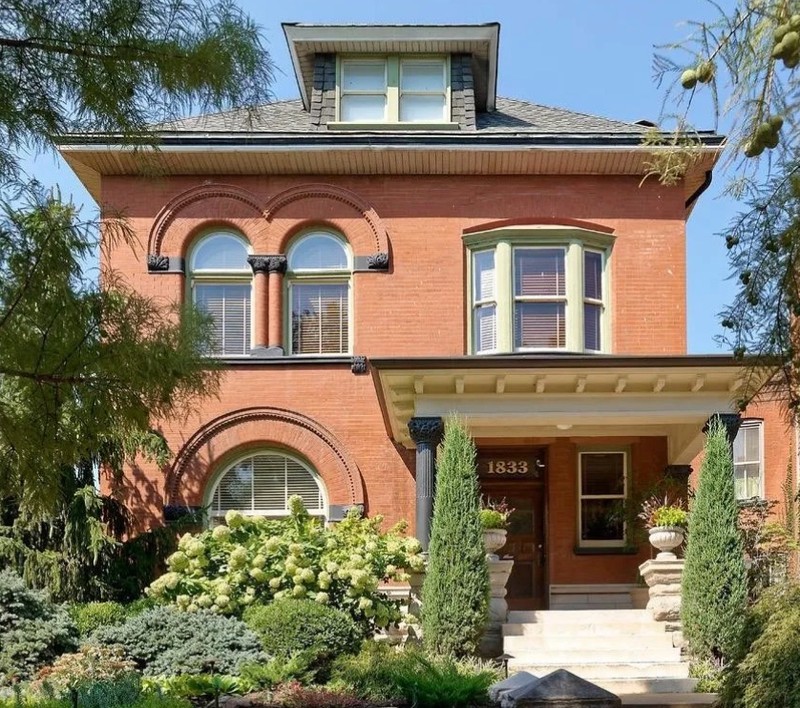
Stained glass window and staircase at 1833 Eighth Street, Soulard.
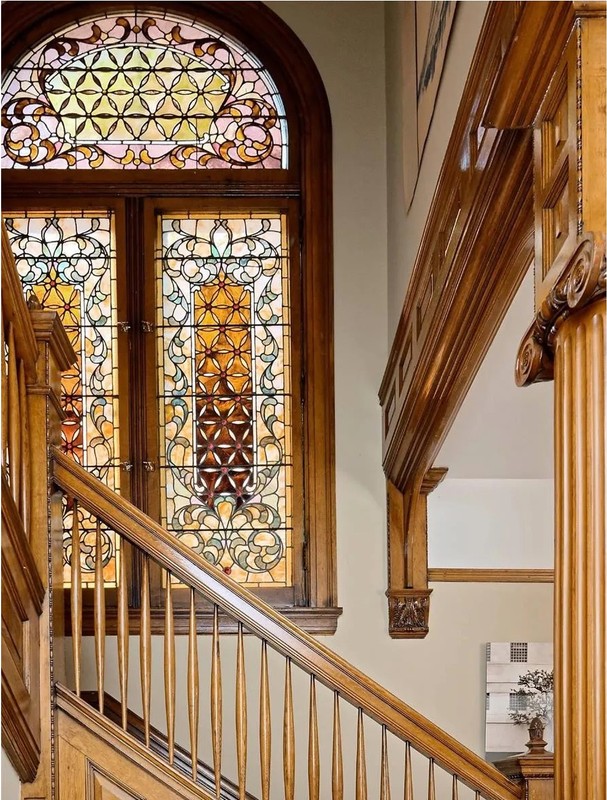
The foyer of 1833 Eighth Street, Soulard.
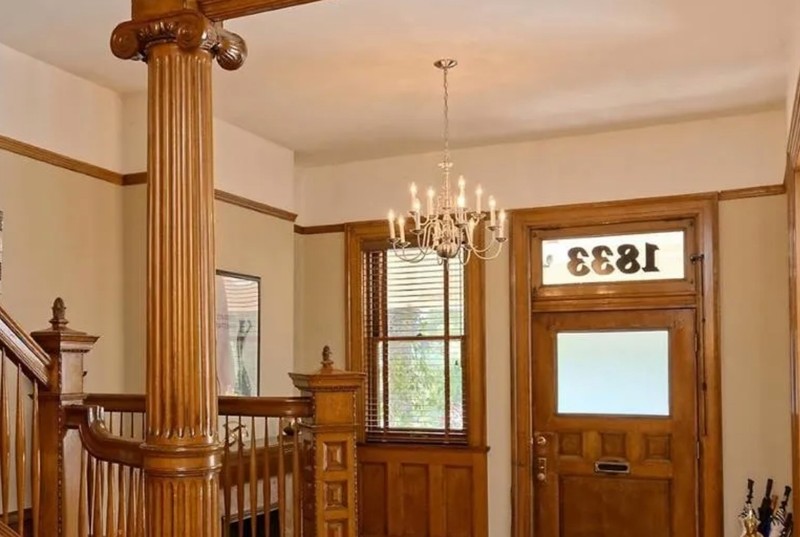
Courtyard behind 1833 Eighth Street, Soulard
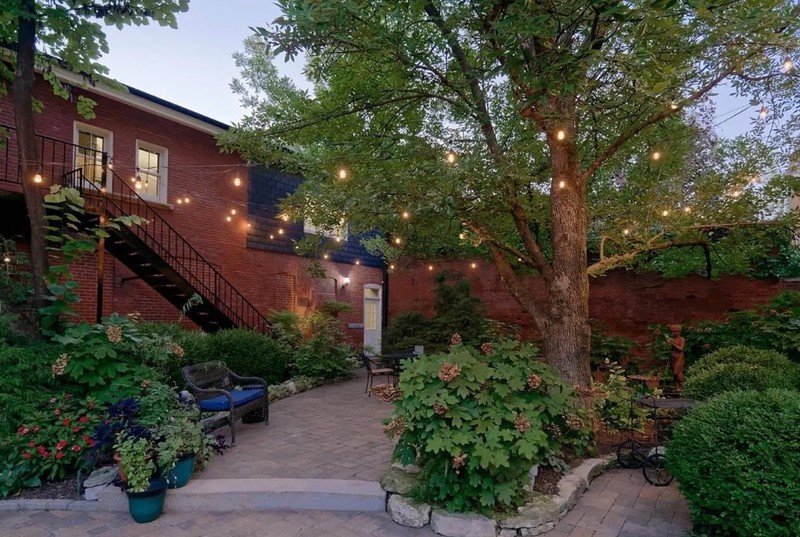
Backstory and Context
Text-to-speech Audio
Until the 1840s, Soulard was mostly comprised of rural landholdings mixed with common fields, which were used by French farmers as pasturage for grazing animals. With the arrival of German and Bohemian immigrants in the mid-nineteenth century, the area became more formally planned out in an urban grid pattern. Many streets were built with two-story brick row houses, alley houses, and 'flounder houses' on narrow lots. During the second half of the nineteenth century, the neighborhood also came to reflect an architectural mix of Federal, Italianate, and French Second Empire buildings. Soulard was initially somewhat isolated from the rest of St. Louis because of Mill Creek, and later, the Mill Creek Valley railroad, while heavy industrial development on the east side separated it from the Mississippi River. The neighborhood eventually became surrounded by high-traffic roadways on three sides, while the large Anheuser-Busch Brewery (1852) anchors the southern part of Soulard.
The historic district is bounded by I-44 to the north, Seventh Street to the southeast, Lynch Street to the south, and I-55 to the west. It includes the original estate of Antoine and Julia Soulard, who arrived in St. Louis by way of New Orleans. Antoine Soulard was royalist who left France because his loyalty to King Louis XVI put him at odds with the revolutionaries. A land surveyor, he received his estate through a land grant from the Spanish crown in exchange for completing a surveying commission just west of the Mississippi River. When the U.S. acquired the Louisiana Purchase Territory from France in 1803, numerous conflicting private land claims resulted due to the old Spanish and French land grants. The Soulards ended up suing the U.S. government for clear title to their estate, which they secured in exchange for $2,000. Afterwards, Julia Soulard began subdividing and selling off lots, leading some historians to dub her the first female real estate developer in the nation. Julia also donated two blocks for a public market, stipulating that the land should remain in use in this capacity. As a result, Soulard Market today remains the oldest continuously operating open-air market west of the Mississippi River.
Soulard also contains a remarkable number of flounder houses. A recent architectural survey conducted by the St. Louis Cultural Resources Office concluded that there are nearly three hundred such structures in St Louis, many of which were built between 1840 and 1900 in Soulard. Built using a simple method based on shed construction, carpenters would install rafters from one tall wall down to one shorter wall, resulting in a right-triangle shaped building, with the unique line of the half-roof suggesting the appearance of a flounder fish. This vernacular style, imported from Europe, became popular in the U.S. during and after the Civil War, particularly in St. Louis as the population of German-speaking immigrants grew. Local architectural historian Chris Naffzinger has described how the flounder style was ideal for narrow lots, as the home's efficient footprint allowed space for a garden, while the right-triangle roofline ensured that rainwater drained onto one's own property rather than a neighbor's.
In addition to the vernacular architecture, Soulard contains many elegant Victorian town-homes and a few mansions, including the property at 1832 Eighth Street built by Philip Schneider, a quarry owner who supplied Missouri Granite for Eads Bridge, City Hall, and the Old St. Louis Post Office. Another Victorian mansion at 1833 Eighth Street, previously known as the St. Elizabeth Settlement House, provided temporary housing and job training for German immigrants as they adjusted to life in a new country. This was also the first structure to have electric lighting in Soulard. Among the district's varied architectural styles, two cathedrals were built in the Gothic Revival style: Trinity Lutheran Church & School (1839) and Saints Peter and Paul Church (1875). The bell-tower of the Roman Catholic church was added fifteen years after construction and is the tallest spire in Soulard. The neighborhood also includes St. Joseph's Croatian Catholic Church (1850), previously a convent for the Ursuline Sisters, and several other historic religious edifices.
Pre-dating the numerous examples of brick urban architecture from the mid to late nineteenth century, a 'Trappers Cottage' (c. 1810) is one of the few remaining examples of French Creole architecture in Soulard. It features a "briquette-entre-poteaux" (brick-between-poles) design and was originally built into a hillside before the neighborhood was graded and platted. When a cyclone hit St. Louis in 1896, not all of Soulard's historic structures were repaired. The first Soulard Market building (1843) was destroyed by the tornado and not fully rebuilt until 1928. The Smile Soda Factory, located at the former site of a German and Bohemian social hall, sustained damage and was forced to close. Soulard again faced difficult times in the post-World War II era, when many neighborhoods in St. Louis succumbed to disinvestment as residents left the city for the suburbs.
Yet Soulard was able to rebound, and the neighborhood came back stronger in the late twentieth and twenty-first century. In 1972, it was listed as a National Historic District, and the City of St. Louis also designated Soulard as a local historic district. Older properties were restored, and in some cases, repurposed: an Art Deco-style police station became an event catering business; several industrial buildings were converted to loft-style apartments; and urban carriage houses, horse-stables, and fire-stations were converted into residential or commercial buildings. In addition to Pontiac Park, which serves as a neighborhood green-space, a dog park and community garden were added. Soulard is currently known for its historic architecture, annual Mardi Gras festival, Anheuser-Busch Brewery, Soulard Art Gallery, and several historic restaurants and pubs reflecting the district's ethnic heritage.
Sources
Albeln, Mark S. "Smile Soda Factory," Rome of the West. April 12th, 2008. Accessed February 14th, 2023. http://www.romeofthewest.com/2008/04/photo-of-smile-soda-building.html.
"French & Spanish Land Grants," Missouri Digital History. Accessed February 14th, 2023. https://www.sos.mo.gov/mdh/curriculum/africanamerican/guide/rg951.
Groth, Mark. "Soulard," Next Stl. Accessed February 14th, 2023. https://nextstl.com/2022/01/soulard/.
"Historic Soulard," Soulard Business Association. Accessed February 14th, 2023. http://historicsoulard.com/about-historic-soulard/.
Naffzinger, Chris. "Finding St. Louis' Famous Flounder Houses," St. Louis Magazine. Accessed February 14th, 2023. https://www.stlmag.com/history/finding-st.-louis%27-famous-flounder-houses/.
"Soulard," Explore St. Louis. Accessed February 14th, 2023. https://explorestlouis.com/things-to-do/neighborhoods/soulard/.
Soulard Historic District Nomination Form - National Register of Historic Places, MO State Parks. Accessed February 14th, 2023. https://mostateparks.com/sites/mostateparks/files/Soulard%20NH%20HD.pdf.
Soulard Neighborhood Historic District, St. Louis MO Gov. Accessed February 14th, 2023. https://www.stlouis-mo.gov/government/departments/planning/cultural-resources/Soulard-Historic-District.cfm#
Soulard Neighborhood in St. Louis, You Tube / OrganSTL Channel. Accessed February 14th, 2023. https://www.youtube.com/watch?v=_92ax5oDIhI.
Soulard Neighborhood Map, St. Louis MO Gov. Accessed February 14th, 2023. stlouis-mo.gov/government/departments/planning/documents/soulard-neighborhood-map.cfm#.
Voight, Jason. "Historic Soulard," Hmdb. October 25th, 2020. Accessed February 14th, 2023. https://www.hmdb.org/m.asp?m=189727.
Voight, Jason. "The Trappers Cottage," Hmdb. November 18th, 2020. Accessed February 14th, 2023. https://www.hmdb.org/m.asp?m=160376.
Historic Soulard
Mark Groth, Next STL
Historic Soulard
Nomination Form, National Register of Historic Places
Nomination Form, National Register of Historic Places
Nomination Form, National Register of Historic Places
Nomination Form, National Register of Historic Places
Nomination Form, National Register of Historic Places
Nomination Form, National Register of Historic Places
Historic Soulard
St. Louis MO Gov
Explore St. Louis
OrganSTL YouTube Channel
OrganSTL YouTube Channel
OrganSTL Youtube Channel
OrganSTL Youtube Channel
Built St. Louis
Hmdb
Hmdb
Realtor.com
Realtor.com
Realtor.com
Realtor.com
